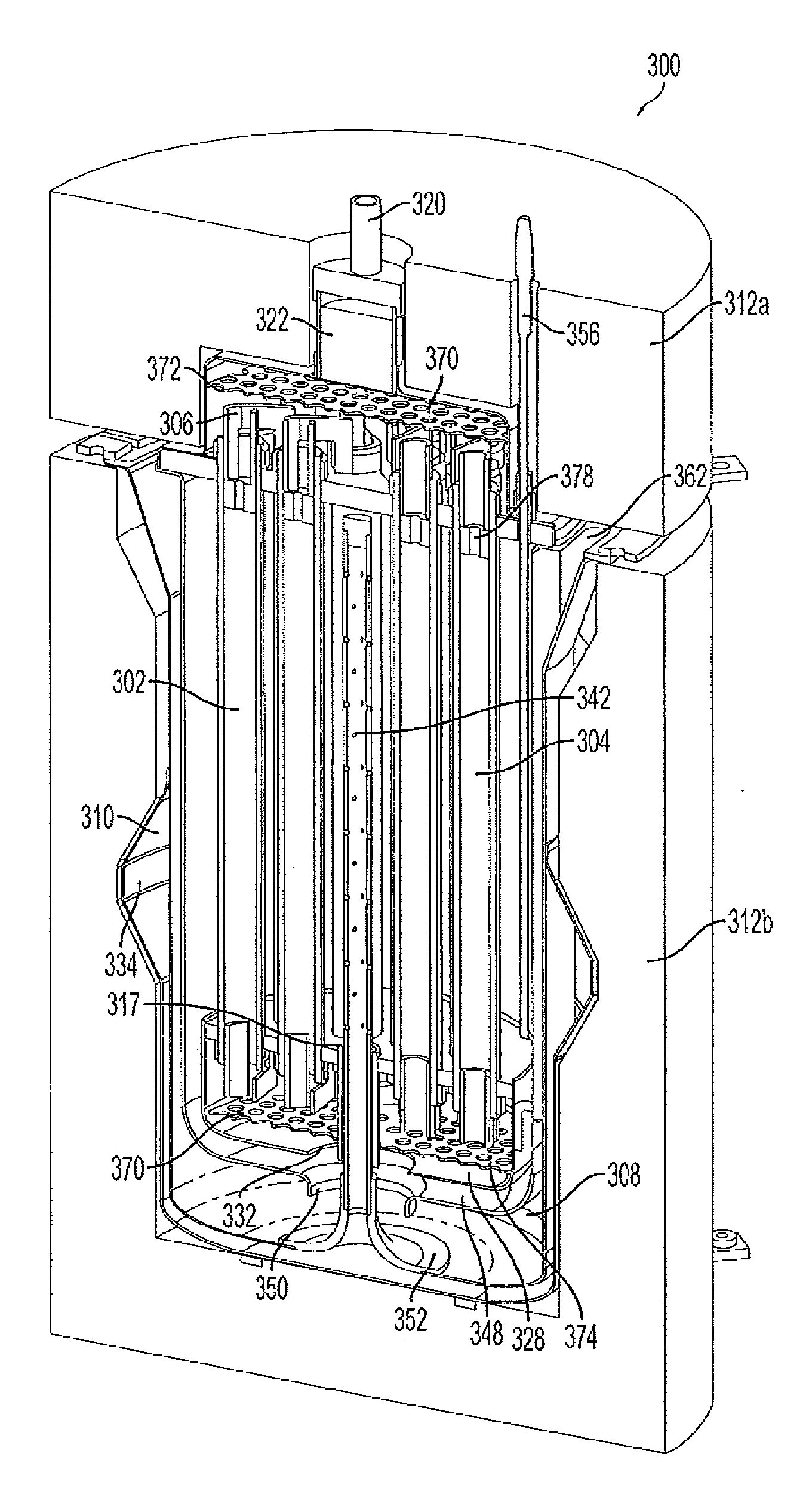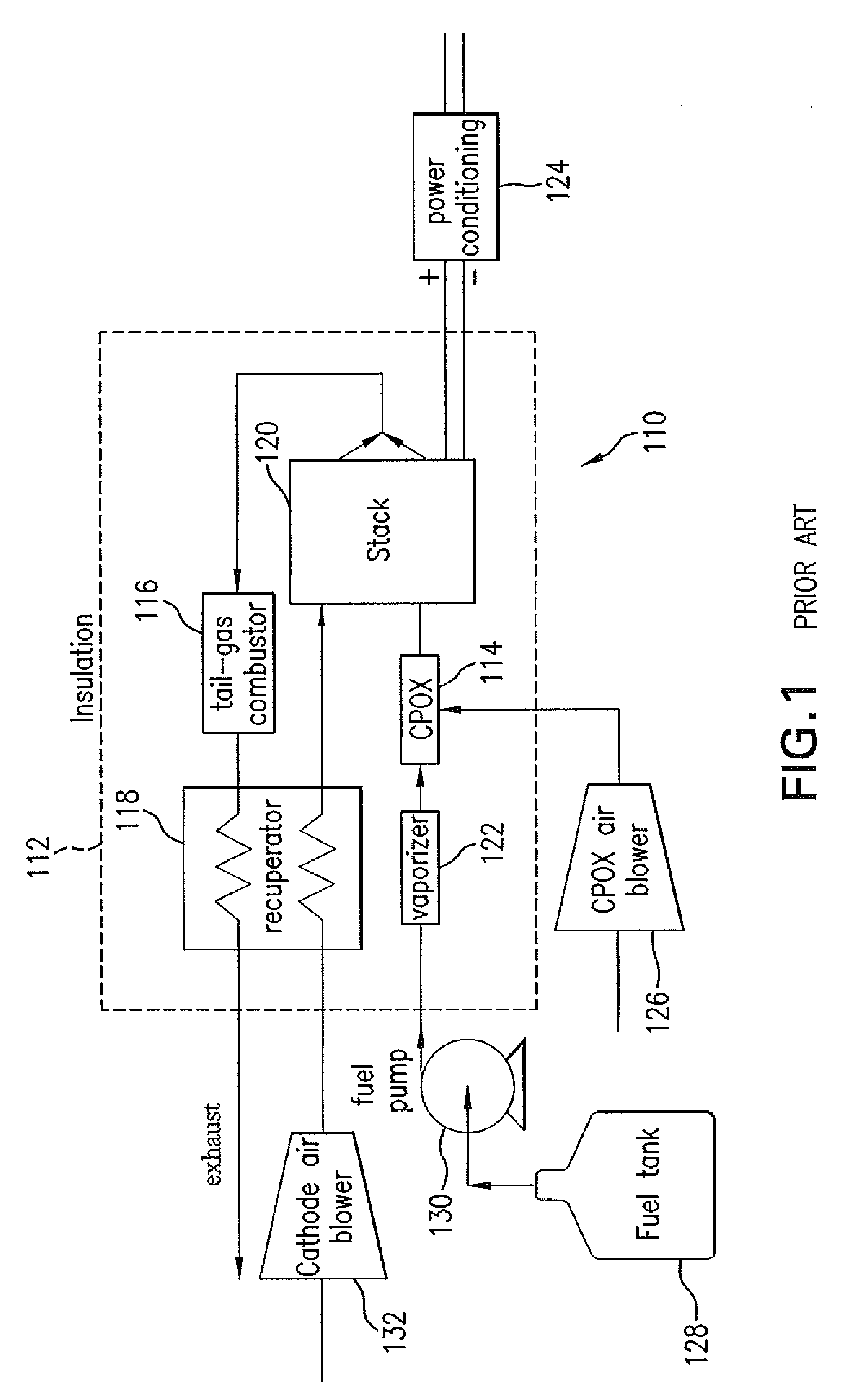Solid oxide fuel cell systems with hot zones having improved reactant distribution
a fuel cell and hot zone technology, applied in the field of solid oxide fuel cell systems with hot zones, can solve the problems of high cost components, labor intensive and extremely difficult to automate process, and negating power consumption most practical benefits in many applications
- Summary
- Abstract
- Description
- Claims
- Application Information
AI Technical Summary
Benefits of technology
Problems solved by technology
Method used
Image
Examples
Embodiment Construction
[0036]The present invention overcomes many of the prior art problems associated with hot zone integration in fuel cell systems. The advantages, and other features of the systems and methods disclosed herein, will become more readily apparent to those having ordinary skill in the art from the following detailed description of certain preferred embodiments taken in conjunction with the drawings which set forth representative embodiments. All relative descriptions herein such as inner, outer, upward, downward, top, bottom, left, right, up, and down are with reference to the Figures, and not meant ill a limiting sense.
[0037]Referring now to FIG. 2, a cross-sectional view of a SOFC system 200 constructed in accordance with the subject technology is shown. The SOFC system 200 includes an elongated stack 202 that consists of a bundle of tubes or tubular cells 204. The tubular cells 204 are connected by interconnects 206 in accordance with the technology disclosed in co-pending, co-owned U....
PUM
| Property | Measurement | Unit |
|---|---|---|
| temperatures | aaaaa | aaaaa |
| temperature | aaaaa | aaaaa |
| temperature | aaaaa | aaaaa |
Abstract
Description
Claims
Application Information
 Login to View More
Login to View More - R&D
- Intellectual Property
- Life Sciences
- Materials
- Tech Scout
- Unparalleled Data Quality
- Higher Quality Content
- 60% Fewer Hallucinations
Browse by: Latest US Patents, China's latest patents, Technical Efficacy Thesaurus, Application Domain, Technology Topic, Popular Technical Reports.
© 2025 PatSnap. All rights reserved.Legal|Privacy policy|Modern Slavery Act Transparency Statement|Sitemap|About US| Contact US: help@patsnap.com



